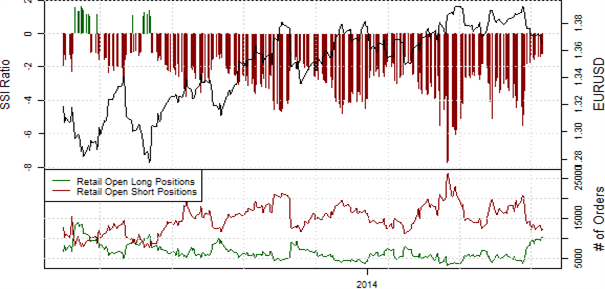Should You Exit Your FX Trade On Strength Or Weakness?
By Tyler Yell, Forex Trading Instructor
Talking Points:
-Why Traders Neglect the Exit
-Two Exit Approaches
-Specific Tools for Both Exit Strategies
“You can’t control what the market does, but you can control your reaction to the market. I examine what I do all the time. That’s what trading is all about.”
-Steve Cohen, Hedge Fund Manager
In my experience, the more years a trader has under their belt, the more attention they pay to the exit on their trade. It’s not that the entry isn’t important, it’s just that there’s a direct profit impact based on your exit. This article will breakdown two methodologies for exiting your forex trades so that you can choose the one that aligns best with your personality & goals.
Why Traders Neglect the Exit
As a trader, it’s easy to focus on entering the trade. After all, you’ve got to be in it to when it and the only way to be in it is to find an entry. And when it comes to entering into a trade, your mind is likely to race to different outcomes about whether or not this trade will be a home-run that “can’t fail” or whether you’re not 100% sure on the trade and therefore, should either hold-off or enter with a smaller trade size. For what it’s worth, regardless of your analysis, the second attitude used as an example is the healthier approach.
However, it’s probably best to take the pressure of yourself regarding the entry. Why? Because, you likely will get at best a decent entry unless you’re counter-trend trading. It’s an irony or paradox of trading that most new traders fret about the entries but where they decide to exit is the most crucial point. In fact, when we studied 12 Million live forex trades over the span of a year, we found that not determining the appropriate exit was the #1 mistake seen time and time again.
If you’re interested in learning what else, besides poor exits, it takes to trade like a professional trader,register for our free course here.
Lastly, before we get to exit plans, I want to show you a different way of looking at EURUSD that only FXCM can provide. This unique chart shows you FXCM’s trading book: what our clients are trading. At a glance, you can see where traders are in the market re: major currency pairs like EURUSD.
Learn Forex: EURUSD SSI overlaid on EURUSD Spot Price

Courtesy of DailyFX Plus’ Speculative Sentiment Index
This is an opportunity to offer you some tough love. You’re likely going to have poor entries. According to the trend of EURUSD (higher from July 9th, 2013) and trading positioning (net short since July 10th, 2014) most traders have had pretty poor entries seeing that a majority were short in an uptrend. However, the key difference between those who lost capital and survived to trade the next day or better yet trade with the trend and against the majority likely had clear exits planned out.
Two Exit Approaches
This part is simple. As far as I’m concerned, there are only two ways that you can decide to exit a trade (well, three if not having a plan is a way to exit). The first method benefits short term traders and that is exiting on strength in the direction of your entry. Therefore, if you’re buying, you can look for clear resistance points or other methods to exit when others are jumping in. The drawback to this methodology is that you could be exiting as the move is just getting started.
The second method is to the benefit of swing style or longer term traders. The preferred exit methodology for longer-term traders is to exit on weakness or a correction in the trend that you’re entering. Exiting on weakness has two distinct drawbacks and that is you either get taken out on a wick low before the trend resumes and / or, you find yourselves leaving a large portion of your paper profits on the table.
Specific Tools for Both Exit Strategies
We just discussed that you can either decide to exit your trades on strength or weakness. To exit on strength, here are a few methodologies you can use that I’ve found favorable over the years:
My preferred methodology is Pivot targets. In a normal uptrend, I’ll look to exit at the weekly R1 level and in a strong uptrend, my preferred exit is the R2 (reversed for downtrends with S1 & S2). The other two methods have been used successfully by many traders.
For exiting on weakness, the most favored methodologies is a daily close below (above in downtrend):
- Moving Average
- Ichimoku
- Prior Swing Low (Swing high in an uptrend)
Emotionally, I believe it’s harder for new traders to exit on weakness. The reason is that it’s easy to beat yourself up for letting so much of your paper profits go away. In order to be comfortable exiting on strength, it’s best to not look at the chart after you exit for a few hours because you don’t want to beat yourself for taking money out of the market. That’s what we’re doing here in the first place!
Happy Trading!
—Written by Tyler Yell, Trading Instructor
To contact Tyler, email tyell@dailyfx.com
To be added to Tyler’s e-mail distribution list, please click here
Tyler is available on Twitter @ForexYell
Add me to your Google+ Forex Circle
Source: Dailyfx Trading Tips






